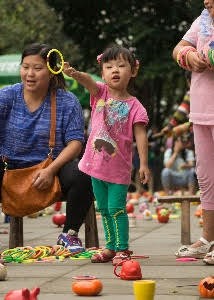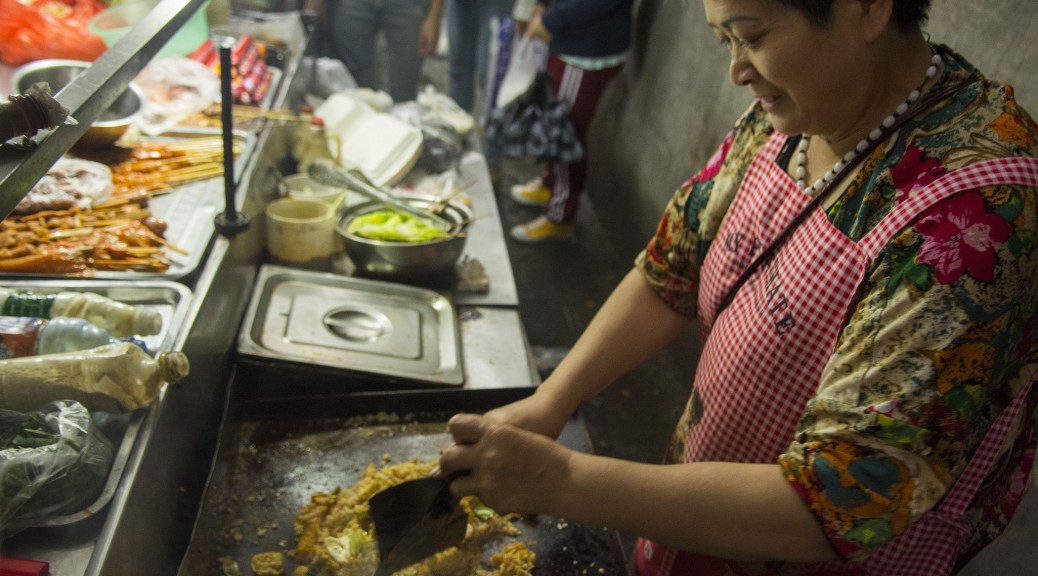21 September 2015
The first thing you need to know about Nanchong streets is that they are filled with people, especially in the evening, especially on weekends, and especially at lunchtime. Now, when I say, “The streets are filled,” I don’t mean every single street – far from it. For a city of 1.3 million people (on par with Dallas), Nanchong feels decidedly uncrowded, especially compared to an American city of similar size. The places where Nanchong does live up to its size, however, are perhaps not where you would expect, especially if you have grown up hearing a Western narrative of China.
So where, then, are the people of Nanchong? Are they at the new underground shopping area at the center of the city, or the sparkly shopping mall downtown that looks unsettlingly like an American Sears? Or even the large McDonalds on the corner of the busiest intersection in the city? Well, no, not really. This is not to say that there are no people in these areas, because there generally are, but there are a lot fewer than the stereotypical view of an “overcrowded consumerist China” would lead you to expect.
Instead, the places most frequented by Nanchong citizens are far more community-oriented. Of these, the most notable are, as we call them, the “food street,” the “market street,” and the parks. These are the places where the true spirit of Chinese culture shines through, debunking American media’s favored narratives of totalitarian oppression and consumerist culture.  The food street, right next to our university, is lined with food carts and noodle shops (here, a bowl of noodles can cost as little as $.75), and full of good-humored college or high school students. On another street, closer to my apartment, an entire three blocks of sidewalk (clear for most of the day) spontaneously transforms into an open-air market every afternoon, as peddlers bring in their wares on an assemblage of rickshaws, carts and scooters. This same street, in a remarkable show of fluidity, changes again around 6 p.m., turning into an open-air hot pot restaurant. And the parks! At a park in Nanchong, one might join a crowd in listening to a man practice his karaoke skills, watch a group of people participating in a spontaneous line dance, or appreciate music drifting from a local band’s weekly street-side practice. But the most striking part of it all is the thousands of other Chinese who are simply content to be alive and to be outside, strolling happily with a friend or spouse.
The food street, right next to our university, is lined with food carts and noodle shops (here, a bowl of noodles can cost as little as $.75), and full of good-humored college or high school students. On another street, closer to my apartment, an entire three blocks of sidewalk (clear for most of the day) spontaneously transforms into an open-air market every afternoon, as peddlers bring in their wares on an assemblage of rickshaws, carts and scooters. This same street, in a remarkable show of fluidity, changes again around 6 p.m., turning into an open-air hot pot restaurant. And the parks! At a park in Nanchong, one might join a crowd in listening to a man practice his karaoke skills, watch a group of people participating in a spontaneous line dance, or appreciate music drifting from a local band’s weekly street-side practice. But the most striking part of it all is the thousands of other Chinese who are simply content to be alive and to be outside, strolling happily with a friend or spouse.
This is where the people of Nanchong are, and this is why Nanchong feels so strikingly different from any American city I have ever been to. In all of these places, the buoyant spirit of the Chinese manifests itself in a way that reflects in stark contrast with the typical American view of China and its people. Call it consumerist if you like, but it certainly is not American consumerism. It is China. To distill it to anything less, anything else would be unfair to the unique spirit and palpable humanity that pervades modern Chinese culture.
– Harrison Horst (sophomore)

